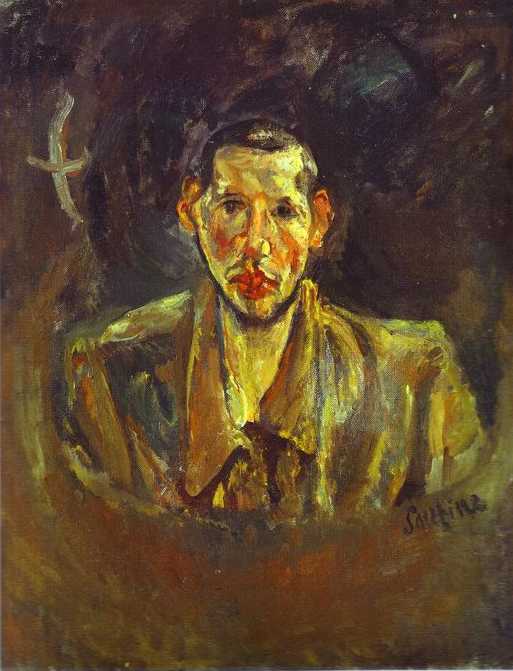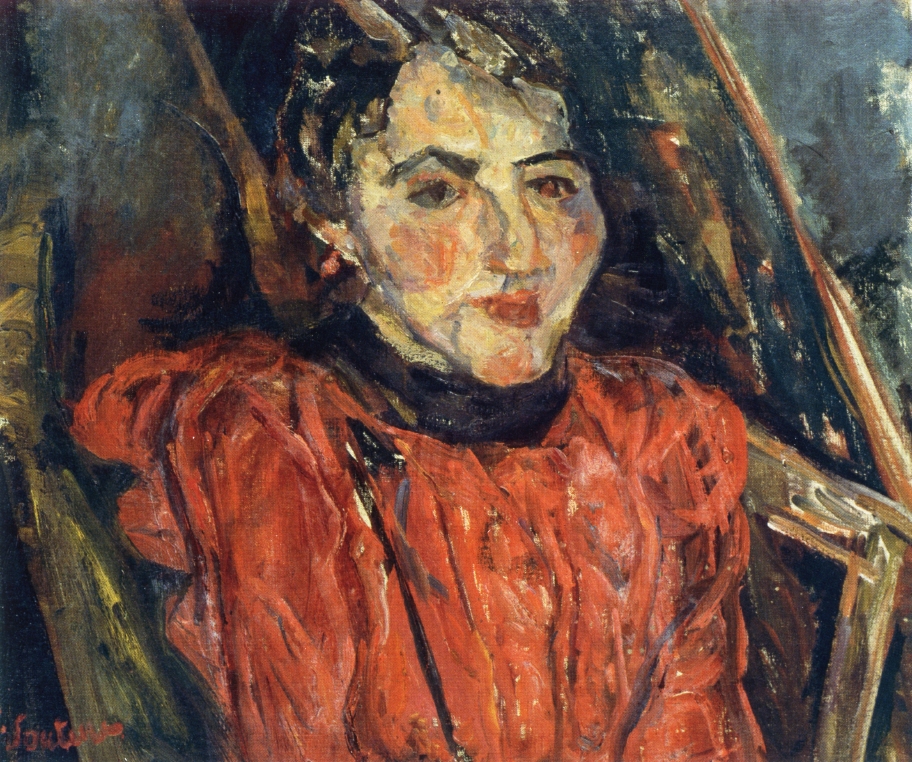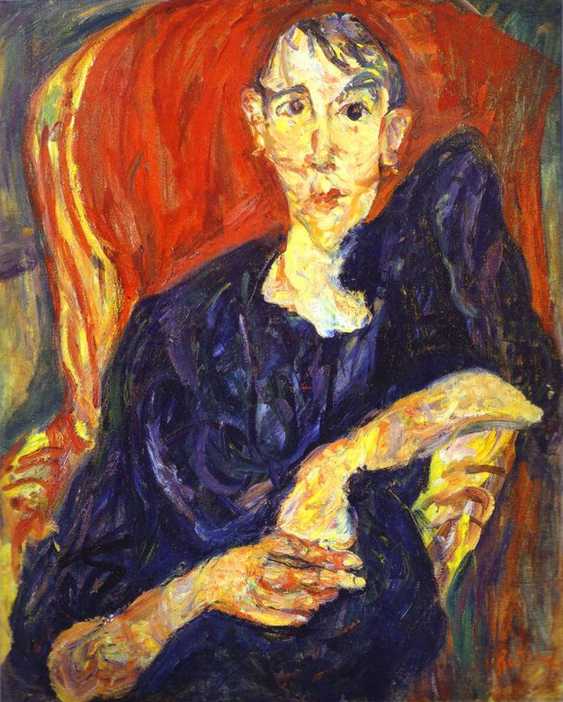Chaim Soutine
Chaim Soutine (* 1893 in Smilavichy, Belarus; † August 9, 1943 in Paris Chaim Soutine actually ) was a Belarusian painter of Jewish origin.
Life
Chaim Soutine was born in 1893 in Smilavichy, a Belorussian shtetl near Minsk with about 400 inhabitants. Soutine was the tenth of eleven children of a poor Jewish Flick cutter. Smilavichy consisted of a collection of ramshackle wooden houses. His mother was prematurely aged, always full of worries and silent, and did not particularly affectionate with their numerous offspring to. At the age of 13 years recorded Soutine liked and made on every available scrap of paper sketches or painted the walls with charcoal. At his father's request, he should be a shoemaker or tailor.
School time
1909 drove Soutine and his school friend Michel Kikoine to Minsk to become an artist. My first teacher in Minsk was a man named Kruger, who gave private lessons and guaranteed success in three months. 1910 Soutine went to Vilnius and enrolled at the Art Academy in Vilnius for a three -year degree, which he completed in 1913. He had managed to save enough money at this time for a train ticket to France and arrived in July in Paris.
Paris time
The painter Pinchas Krémègne, had visited together with the Soutine in Vilnius, the Academy, already " La Ruche " a dilapidated, consisting of a variety of artists' studios building lived in the 15th arrondissement. Krémègne Soutine led into the studio, where there were as Alexander Archipenko, Marc Chagall, Moise Kisling, Fernand Léger, Henri Laurens, Amedeo Modigliani and Ossip Zadkine lived and worked. Modigliani was later a close friend and supporter Soutine be, who introduced him to his patron and art dealer Leopold Zborowski.
Soutine wrote for a short time in the Academy of Fernand Cormon one, who had previously taught decades van Gogh and Henri de Toulouse- Lautrec. Models found Soutine at El Greco, Velazquez and Rembrandt. However, the strongest impressions he learned from Paul Cézanne, Vincent van Gogh and Pierre Bonnard. Another important formal influence can be seen in different images, which are formed in early 1918. Bonnard showed him how you processed the color " wet" and in tightly structured style of painting.
In 1918 he left for the first time since his arrival in Paris and France went along with Modigliani to Cagnes -sur -Mer in southern France.
Ceret - time
In 1919 he visited Ceret in the Languedoc-Roussillon region near the French Pyrenees and the Spanish border, where he moved in for about three years. Over the next three years, from 1919 to 1922, originated about 200 images. In Ceret Soutine painted mostly landscapes, but some portraits take in his oeuvre a special place. Soutine's stylistic development in Ceret shows but most evident in his landscapes. The famous purchase of Soutine's paintings in 1923 by the U.S. doctor Albert C. Barnes and further acquisitions of other collectors in it called forth a demand for his images. This Soutine heard on financial worries.
From 1923 to 1925 he spent his time alternately in Cagnes or neighboring villages and in Paris. He met in these years Deborah Melnik, a Jewish woman who he knew from Vilna. Shortly thereafter, a daughter was born. Soutine denied paternity and left mother and child. From 1925-1929 Soutine lived mostly in Paris. His paintings of this period are mostly still life; dead pheasants, turkeys, rabbit and ox carcasses. Zborowski died in 1932. Madeleine Castaing was Soutine's patron.
Last years
From 1930-1935 Soutine spent the summer months near Chartres in the country castle of his patrons. In 1935 he had a solo exhibition in the U.S. in Chicago Arts Club. In 1937 he met Gerda Groth, a German emigrant from Nazi Germany, he is nicknamed the " Mile Guard". After the outbreak of hostilities she was deported by the French on May 15, 1940 along with other Germans living in Paris in the internment camp de Gur in the Pyrenees. Under the German occupation from July 1940 Soutine was forced in as a registered Jew to seek outside Paris in other small towns refuge. Soutine learned in November Marie- Berthe Aurenche know, the former wife of Max Ernst, who became his companion.
In August 1943, he suffered a severe gastric perforation. Soutine died on August 9, 1943 during surgery. On August 11, he was buried at the Montparnasse Cemetery. Among the few mourners were Pablo Picasso, Max Jacob, and Jean Cocteau.
International appreciation
In 1964, his works at the documenta in Kassel III were shown in the painting department. In the art trade his works are valued highly today. Thus scored Soutine painting Le grand chapeau, 2010 Christie's auction house about 4.5 million U.S. dollars.







